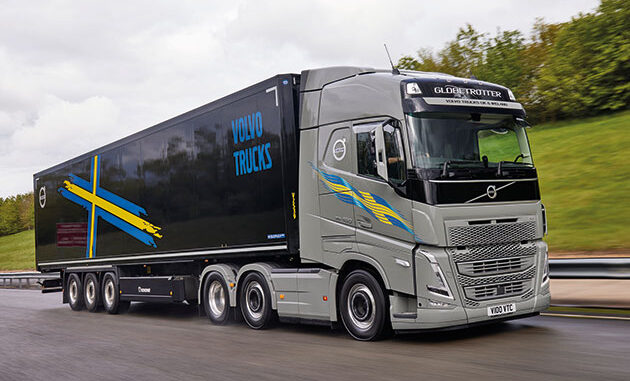
Plaudits for the fuel efficient Volvo FH with the turbo compound engine and I-See predictive cruise control have been in multitude. Stevie Walker takes to the road to see if it stands up to an operator’s way of life. Images: Tom Cunningham
VOLVO HAS embraced the turbo compound engine, and it seems to be popular with operators as well. Relaunched in 2016, its history dates back to the 1980s when both Swedish truck manufacturers toyed with a technology where exhaust-gas energy is recovered by a turbine and driven into the crankshaft.
Volvo offered turbo compound in 2001 with a D12 500hp engine to boost power and torque. It was available right up to the introduction of Euro 4/5.
These days turbo compound at Euro 6 works off the D13K 12.8 litre, with both 460 and 500hp options. Turbo compound utilises a conventional turbocharger for its normal function of boosting the pressure of the intake charge of air. The exiting exhaust gases still contain considerable energy and powers a secondary turbine, which in turn adds drive to the engine flywheel, adding 300Nm to the engine’s torque output.



